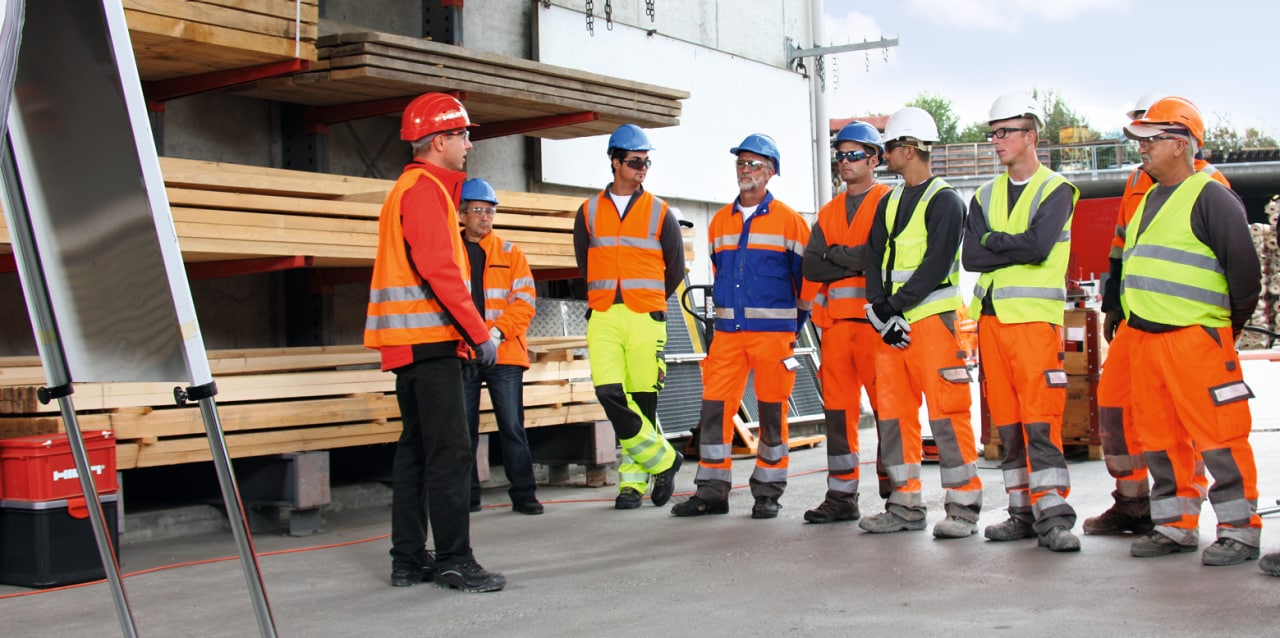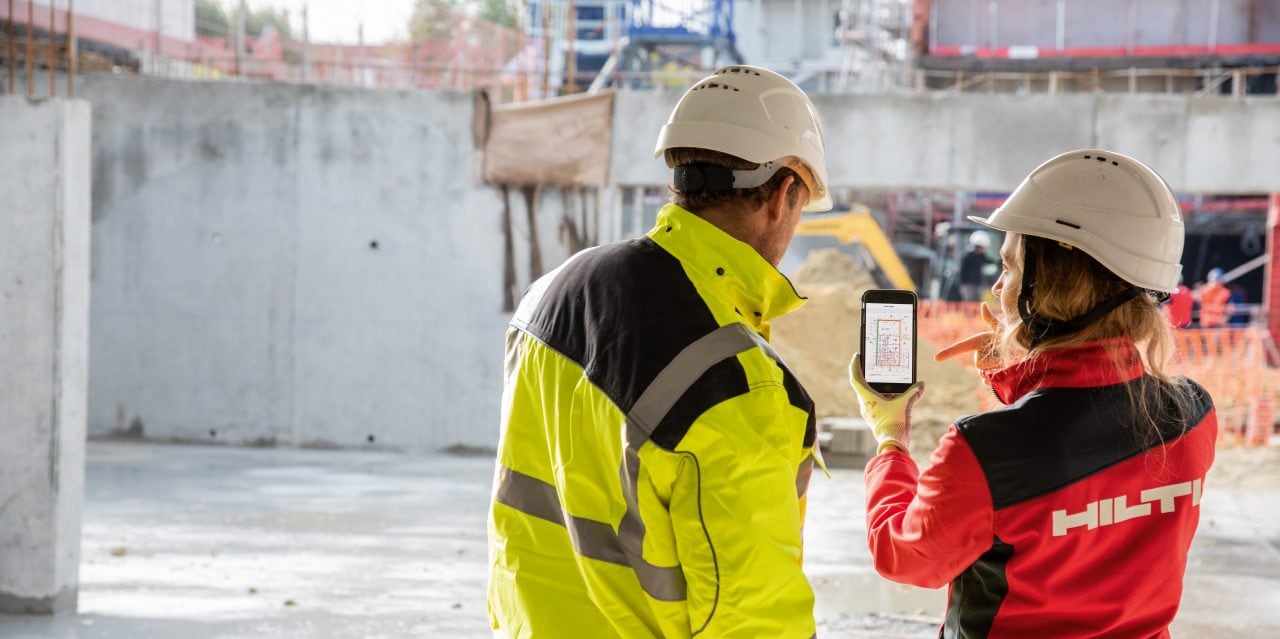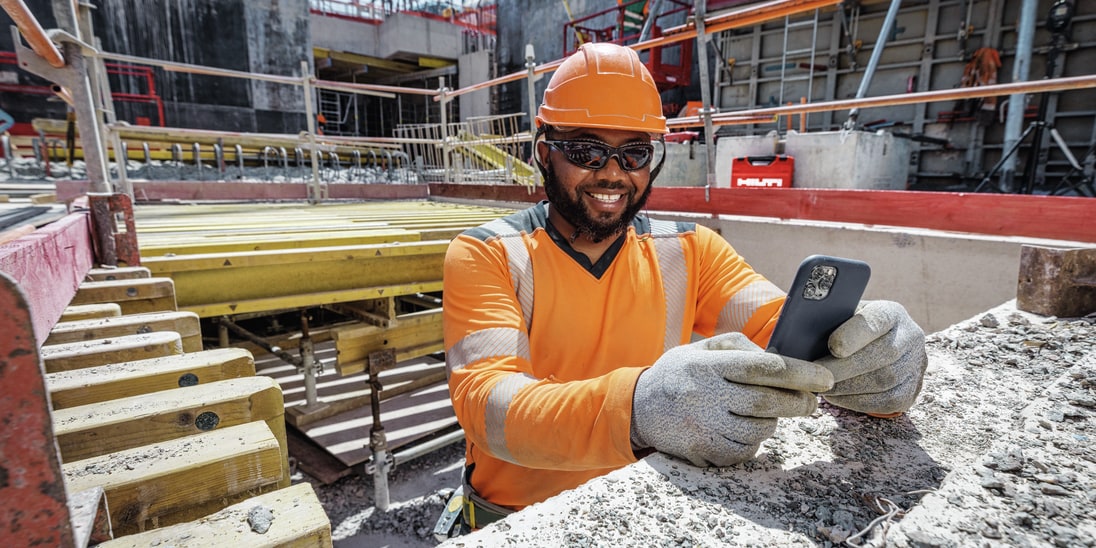- Home
- Company
- Newsroom
- Hilti Stories
- The Secret to Building with Confidence
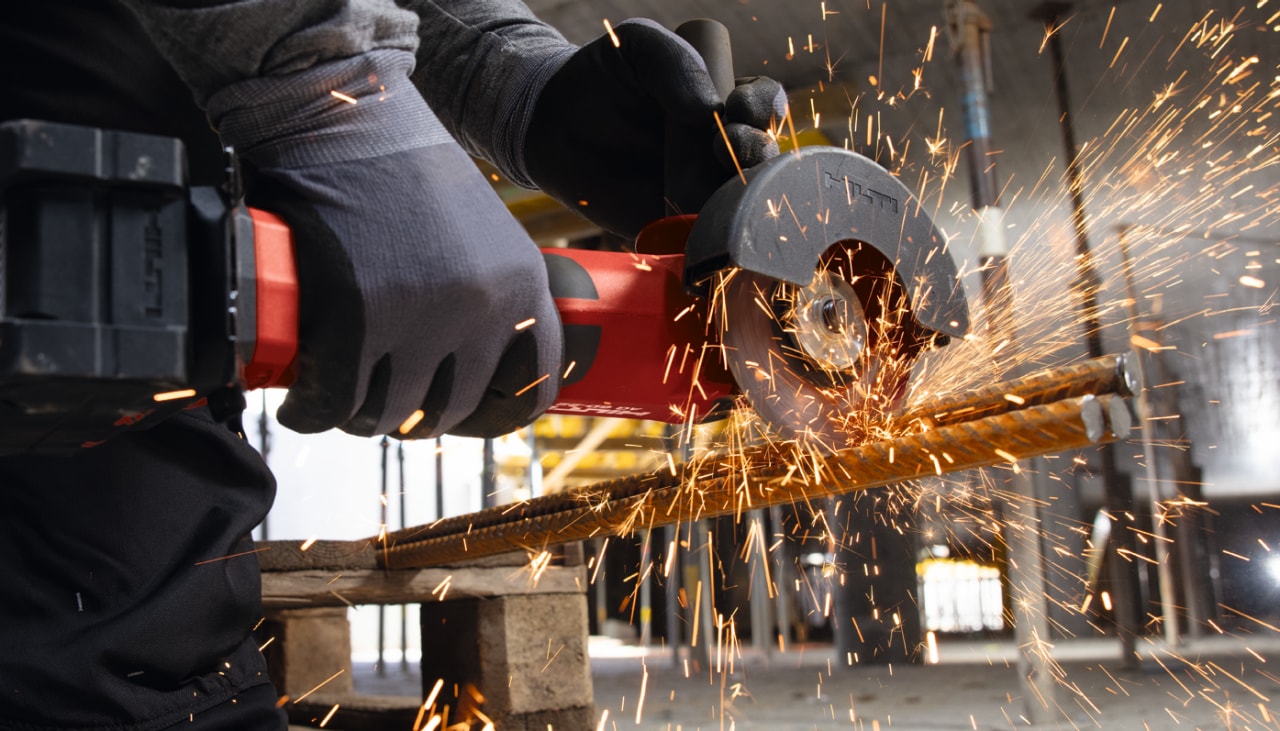
The Secret to Building with Confidence
Written by Rhizlaine Benabid | August 1, 2023
The construction industry is one of the most essential sectors in any economy, responsible for building the structures we live and work in. It employs a massive workforce that contributes to numerous projects. However, working in this industry comes with its fair share of risks and hazards.
Various statistics underscore the importance of promoting health and safety practices on construction sites. In 2021, the U.S. construction industry reported over 169,000 non-fatal injuries and illnesses, with around 80,000 of those resulting in missed workdays. Some estimates suggest that this costs the industry up to $11 billion a year. From air contaminants to falling from heights, and even white finger disease caused by vibrations, the list of potential hazards goes on and on. In the EU in 2020, The European Statistics on Accidents at Work (ESAW) registered 2,987 non-fatal injuries per 100,000 persons employed in the construction industry. More than a fifth of all fatal occupational accidents in the EU were linked to the construction sector.
Workers in construction zones are exposed to numerous hazards, such as falling objects, heavy machinery and working at heights. Therefore, it is imperative to promote a safety culture and to establish safety standards that mandate protective equipment, proper training, and risk assessment. The failure to maintain safety regulations can result in serious accidents, injuries and, in some cases, fatalities.
Therefore, individuals working in the construction sector need to be well-versed in safety measures and practices. Hilti and the construction industry at large are trying to make construction sites safer and healthier. The shift is driven by an increased awareness of the risks faced by workers and a desire to improve the overall health and well-being of construction workers.
Measures Taken to Improve Safety on Construction Sites
The first step towards maintaining safety on construction sites is the creation of a safety plan, which should be communicated to all employees and posted throughout the site. Workers should be trained in safety procedures and safety protocols must be adhered to at all times. Regular safety inspections should be carried out to identify potential hazards and risks. It is also essential to ensure that all workers are equipped with protective gear. Proper lighting and ventilation in the work area, as well as strict adherence to the rules when using power tools and heavy machinery, will contribute to maintaining safe working conditions on construction sites, too.
Safety standards also ensure that construction zones are properly marked and equipped with warning signs and traffic signals to prevent accidents caused by a lack of visibility.
The construction industry has readily adopted technologies to improve health and safety on construction sites. For example, the use of wearable devices, such as smartwatches and sensors, has increased dramatically increased in recent years. These devices can monitor workers’ behavior and conditions in real-time, alerting workers to potential hazards and improving response times in the event of an emergency.
Hilti as A Safety Partner
Hilti's vision is to become the preferred safety partner for its customers, by providing innovative solutions that enhance productivity and safety on jobsites.
In recent years, the use of software on construction sites has helped to improve safety and quality control. These technological advancements have not only improved the accuracy and efficiency of the construction process but have also contributed to reducing workplace injuries.
We are creating new software solutions to digitalize critical workflows, and in doing so make our customers’ core business processes safer, more productive and sustainable. As we develop software products, we leverage our direct link to our customers and continuously incorporate their feedback and input. This allows us to tailor the solutions towards the specific needs of construction companies and not just offer generic software products.
Transform automation, repetitive tasks, ergonomics
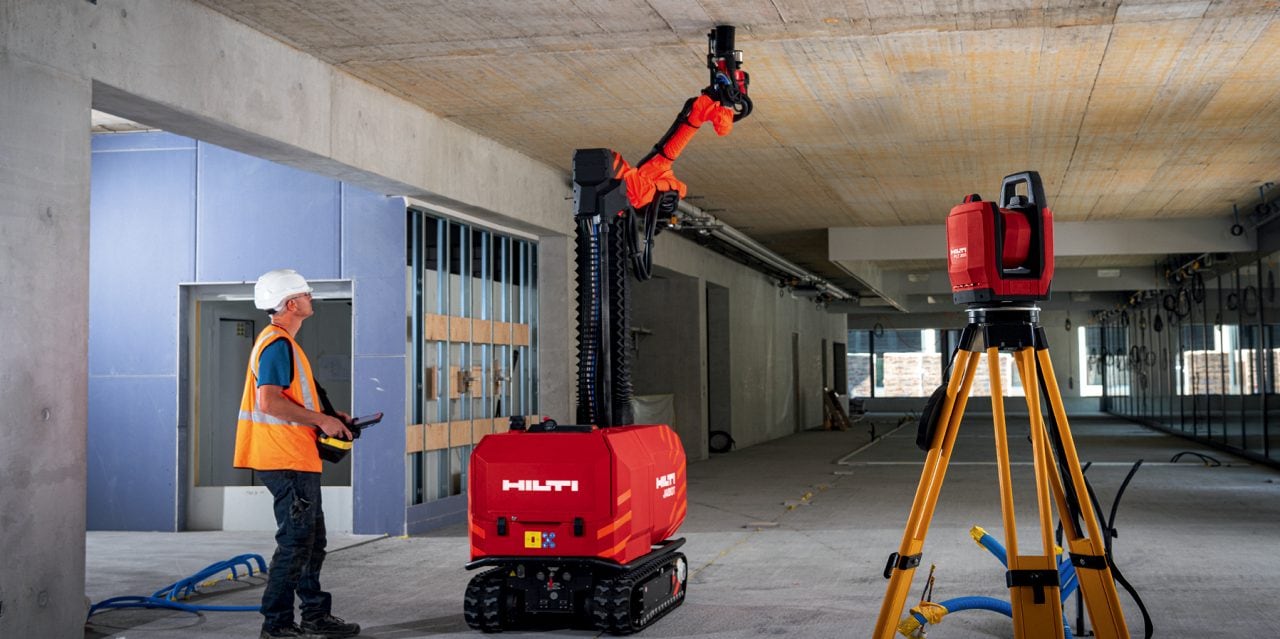
Jaibot, The Canvas robot and the Exoskeleton
We are committed to developing solutions that enhance workplace automation and improve ergonomics, alleviating repetitive tasks that put a strain on the user's body. One of our biggest achievements in this regard was the launch of the Jaibot, a semi-autonomous construction robot that aids operators performing physically demanding and repetitive tasks such as overhead drilling in mechanical, electrical or plumbing work. We equipped the Jaibot with a dust extraction solution that we further upgraded in 2022 to enhance its vacuuming power.
In 2023, we announced our partnership with Canvas, a construction robotics company that has developed a robotic drywalling solution that will revolutionize the way construction workers finish walls. Additionally, we have been expanding our markets for the EXO-S Shoulder Exoskeleton for overhead applications, which we introduced last year.
Learn more about the Jaibot Learn more about the Canvas partnership Learn more about the ExoskeletonBuilding Information Modeling (BIM)
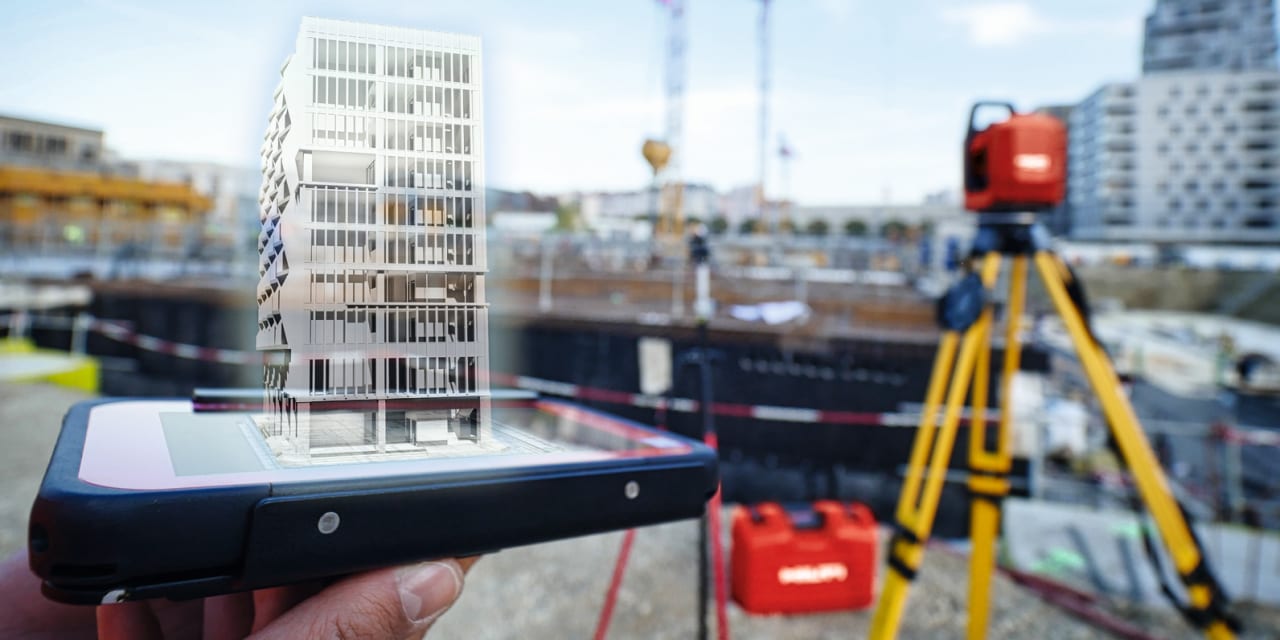
BIM has transformed the construction industry, revolutionizing the way architects and engineers collaborate and avoid conflicts. But what does BIM mean for health and safety? With BIM, construction sites can become safer as potential hazards are identified early in the construction process. By creating a digital model of the project, clashes or risks can be easily detected and preventive measures can be implemented. For instance, if a 3D BIM model shows two cranes in close proximity, the potential for any physical clash can be identified in advance, allowing for site layout modifications that could prevent accidents.
We employ BIM methodology to establish a comprehensive workflow partnership with our clients, enabling us to enhance productivity and ensure greater safety in their projects. Using BIM, we can effectively support our customers in achieving significant productivity improvements and enhanced safety measures throughout their project’s lifecycle.
Learn more about BIMEnhanced tools with built-in safety technologies
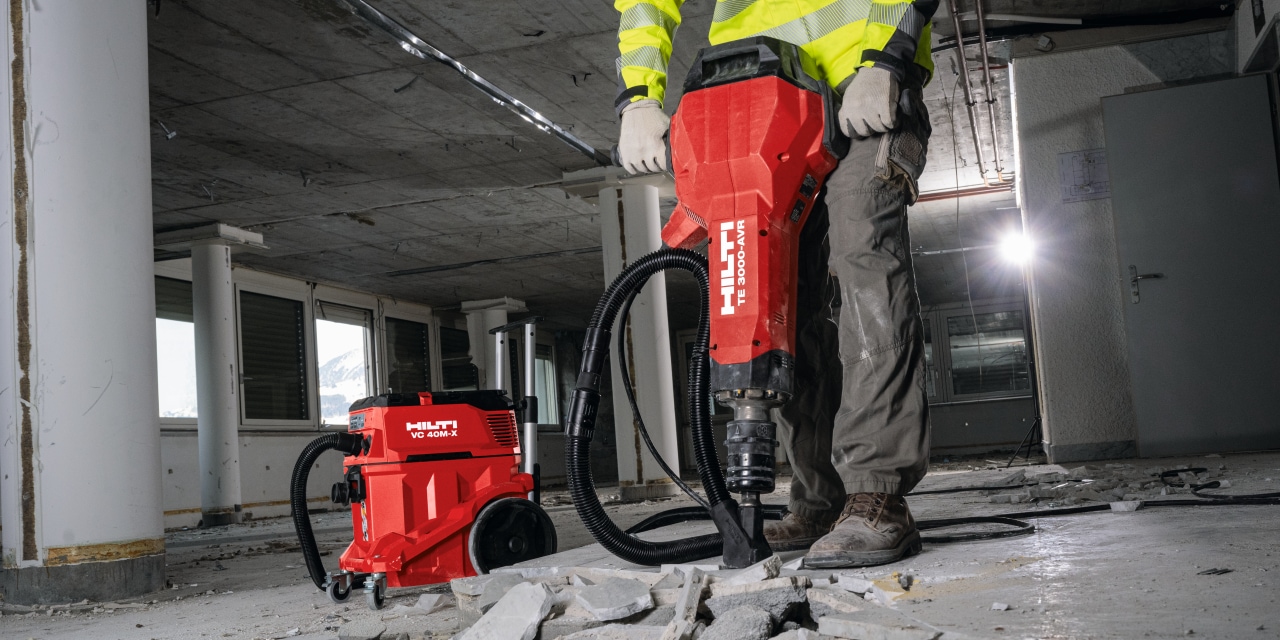
To help to preserve the health of operators, tools need to be certified according to relevant international standards. At Hilti, we rely on the human body vibration filter add-in in Simcenter™ Testlab™ software. This is a certification tool for analyzing vibrations transmitted to the human body according to internationally recognized standards specified by the International Organization for Standardization (ISO) 2631 and ISO 5349, and the European Standards (EN) 60745 standard.
To meet the demanding requirements of the construction industry, Hilti provides active vibration reduction (AVR) functionality, which allows operators to be less exposed to vibration, thus increasing the permissible daily use of the tool. The TE 3000-AVR is Hilti’s most powerful concrete demolition hammer and features low vibrations and a brushless motor. The AVR feature makes the tool less tiring to use, help to increase an operator’s daily productivity.
Learn more about AVR technologyNuron cordless tools

In January 2022 we launched Nuron, a new 22V battery platform with additional pioneering features. The Hilti Nuron SensTech grinder unveils new anti-kickback technology, known as SensTech, and features, in addition, 3D Active Torque Control (ATC) to help to mitigate the risk of injury. It works by using capacitive sensors to intuit the grip of the operator. If SensTech detects a user is losing control of the tool it activates an auto-shutoff mechanism. And the 3D ATC senses if the grinder suddenly jerks in one direction or spins-out. Either of these activates Hilti’s dead-man switch and turns the grinder off before injuries can occur.
With the introduction of our Nuron DSH 600-22 battery cut-off saw, allowing us to transition from gas-powered and corded tools to a cordless platform. By doing so, we can offer customers solutions that eliminate toxic fumes generated by gas-powered tools. Nuron cordless tools eradicate hazards associated with electrical cords, such as slips, trips and falls.
Learn more about NuronEffective measures for minimizing dust exposure
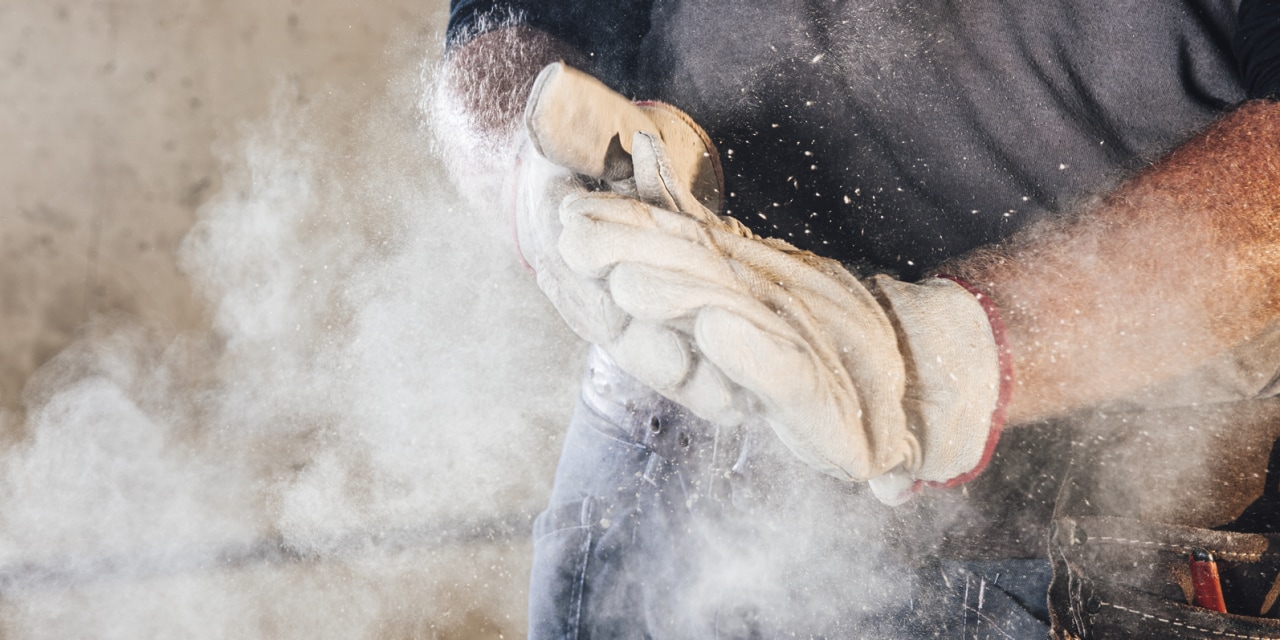
We were the first to launch a power tool with an integrated dust extraction system in 1995. Today, up to 95 percent of our tools can be used virtually dust-free. Our Health & Safety Competence Center in Kaufering (Germany) has its own Dust Lab, where our experts evaluate solutions to effectively minimize dust.
Our Dust Removal Systems (DRS) remove dust at the source and collect it with powerful vacuum cleaners like the VC 20-/40-X. In 2022, we upgraded our DRS portfolio with the TE 4-22 and TE 6-22 cordless rotary hammers. We also introduced the cordless VC10-22 battery-powered vacuum cleaner, enabling our DRS and SAFEset solutions to be fully cordless. Our portfolio for jobsite and worker safety includes air cleaners like the AIC 1000 and 2000, which filter very fine dust particles.
Learn more about Dust Removal SystemsThe benefit of training and education
We believe that training and education are essential components of workplace safety. That's why we offer a comprehensive range of interactive training sessions for our users, in addition to our hardware offerings designed to enhance health and safety. Our training modules include topics like dust management and working with angle grinders, and we're always adding more to our portfolio. With on-site and virtual training options led by our experts, we have trained approximately 8,000 users in 2022 alone. We've also expanded our e-learning course offerings, with fully digital, flexible courses available in multiple languages. Following a successful pilot in eight of our markets, we'll continue to roll out our digital training portfolio in 2023.
Learn more about our Health and Safety TrainingsConstantly Committed to Safety and Productivity
The construction industry is taking significant steps to improve health and safety on construction sites, and there have been notable improvements over the past few decades. There will be a continued emphasis on improving health and safety on construction sites, both due to the moral as well as financial benefits for society. However, there is still much to be done, and continued efforts are needed to ensure the safety and well-being of construction workers.
At Hilti, we believe that by investing in smart construction technologies and sustainable practices, adopting best practices, using the right tools, investing in training, and hiring the right workforce, we can continue to improve safety in the construction industry and make construction sites safer for everyone. We are committed to being our customers' premier safety partner, continuously innovating to fulfill their ever-evolving needs.
